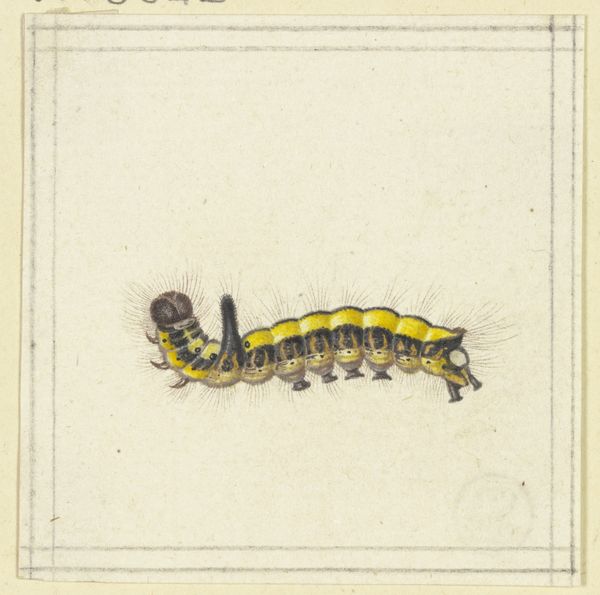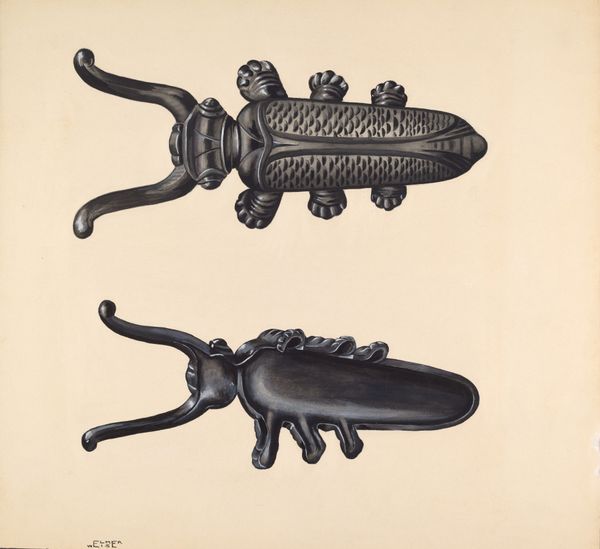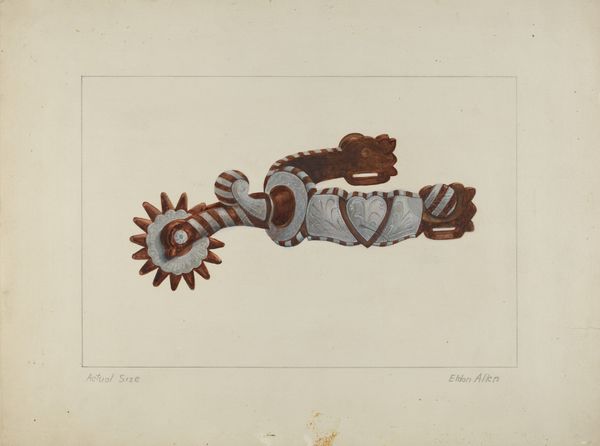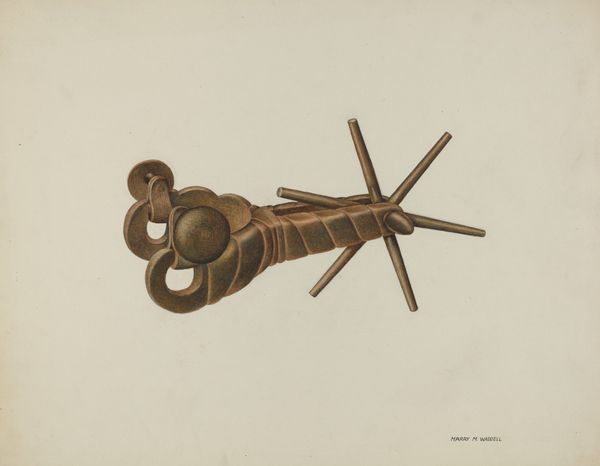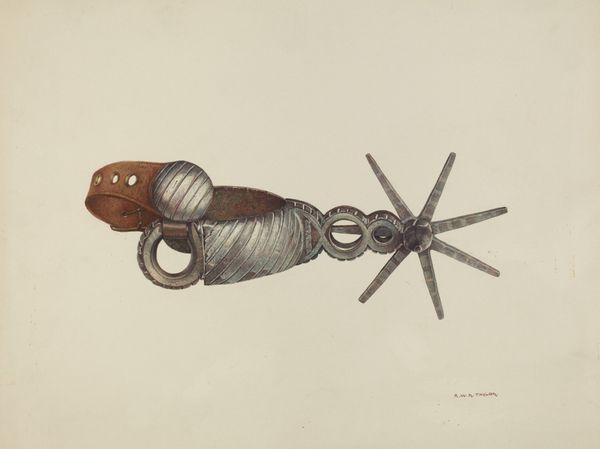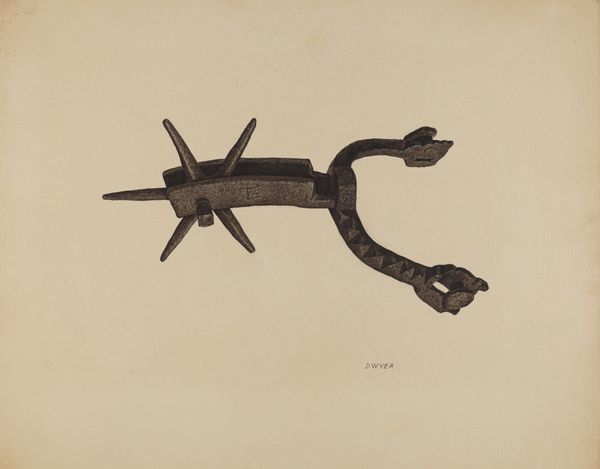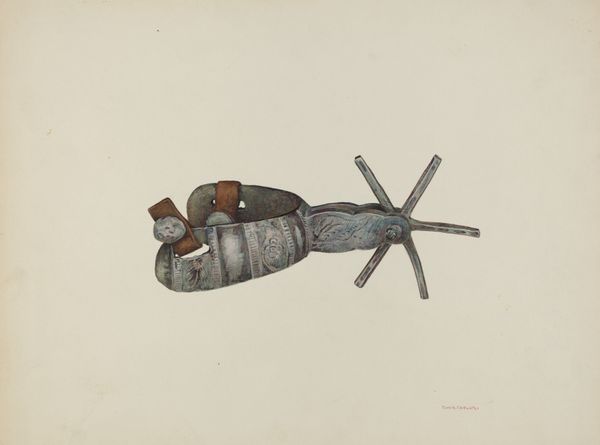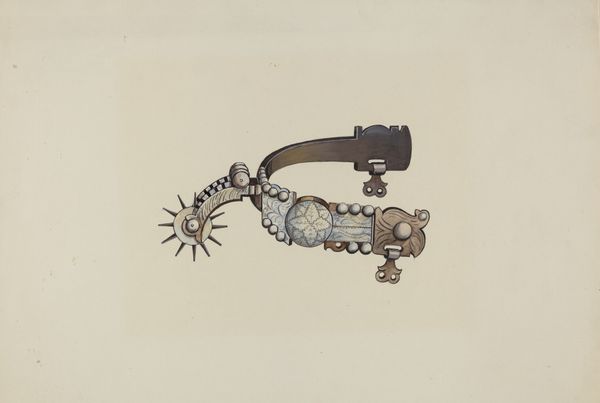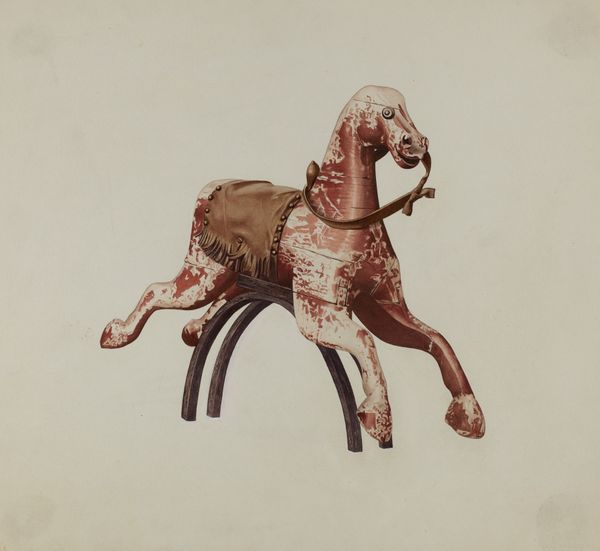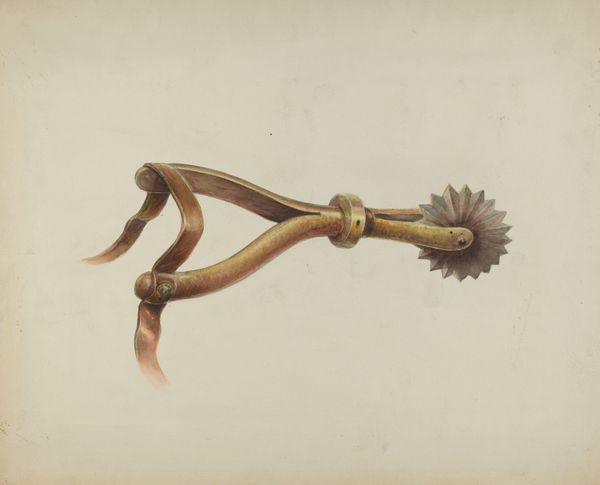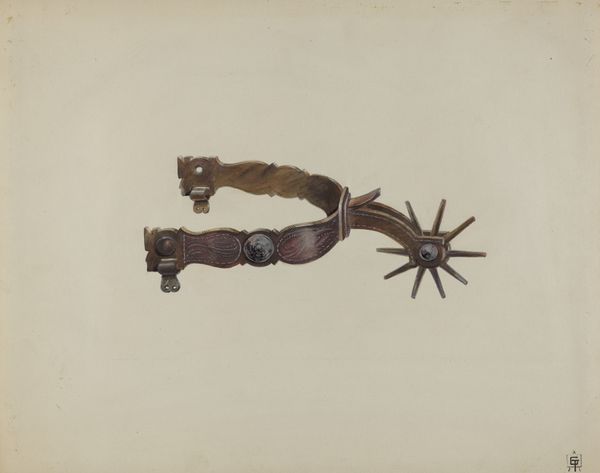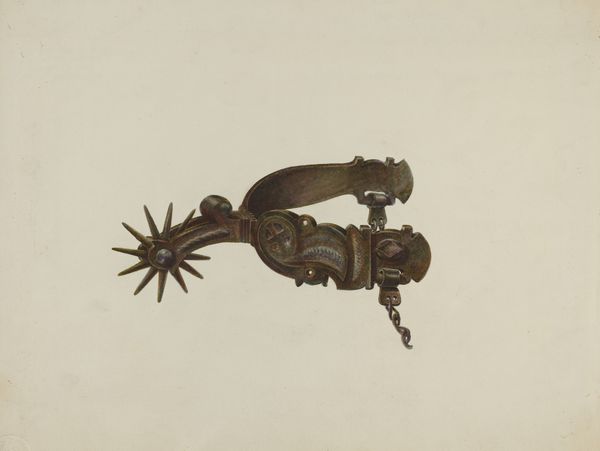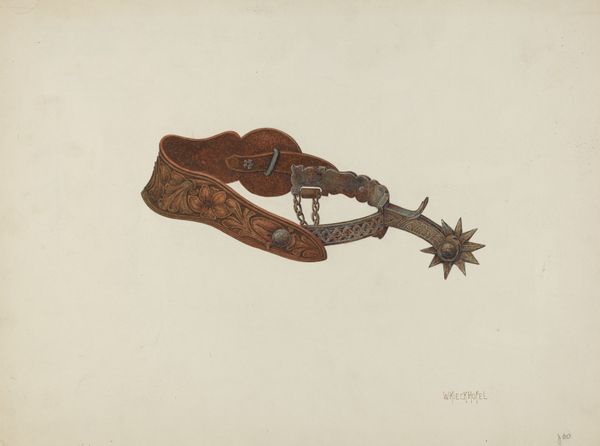
drawing, coloured-pencil, paper, ink
#
drawing
#
coloured-pencil
#
baroque
#
paper
#
ink
#
coloured pencil
Copyright: Public Domain
Curator: I find this drawing of a caterpillar unexpectedly… elegant. What’s your take? Editor: There is something alluring about the contrast of danger and delicacy, but how do we place such a unique rendering within a broader art-historical context? Curator: Well, here at the Städel Museum we have this beautiful yet simple study titled "A Black and Red Caterpillar with Yellow Tufts" by Herman Henstenburgh. Though undated, it is done with ink and colored pencil on paper, clearly belonging to the Baroque era. Editor: Baroque…Yes! Those dramatically placed yellow tufts do echo the ornamentation of the period. But is the caterpillar a straightforward depiction of nature, or something more? Caterpillars themselves are potent symbols of transformation. Curator: That’s precisely the kind of layering I find fascinating. Consider, for instance, the era in which this drawing was likely created – one marked by stark social hierarchies and prescribed gender roles. Isn’t there something subversive in spotlighting this creeping, crawling thing? Editor: Perhaps it's about life cycles, the symbolism of transformation from humble beginnings. In various cultures, the butterfly – the caterpillar's final form – embodies the soul, immortality. Henstenburgh gives us the promise of future splendor, like a memento mori. Curator: I am glad you pointed out how a memento mori would relate back to larger existential conversations. We could further extend this idea into exploring themes of vulnerability, resistance, even defiance through art... all projected onto an insect. Editor: Exactly. In the context of our present moment, where discussions of metamorphosis and identity are so central, seeing this creature as an allegory offers a way to engage history through a lens of personal and political becoming. Curator: Seeing the cultural undercurrents of transformation makes me really wonder whether Henstenburgh wanted to make a commentary through visual means... Editor: It's these conversations that allow the symbols to retain meaning, that ensure art history keeps in dialogue with our contemporary struggles, isn’t it?
Comments
No comments
Be the first to comment and join the conversation on the ultimate creative platform.
